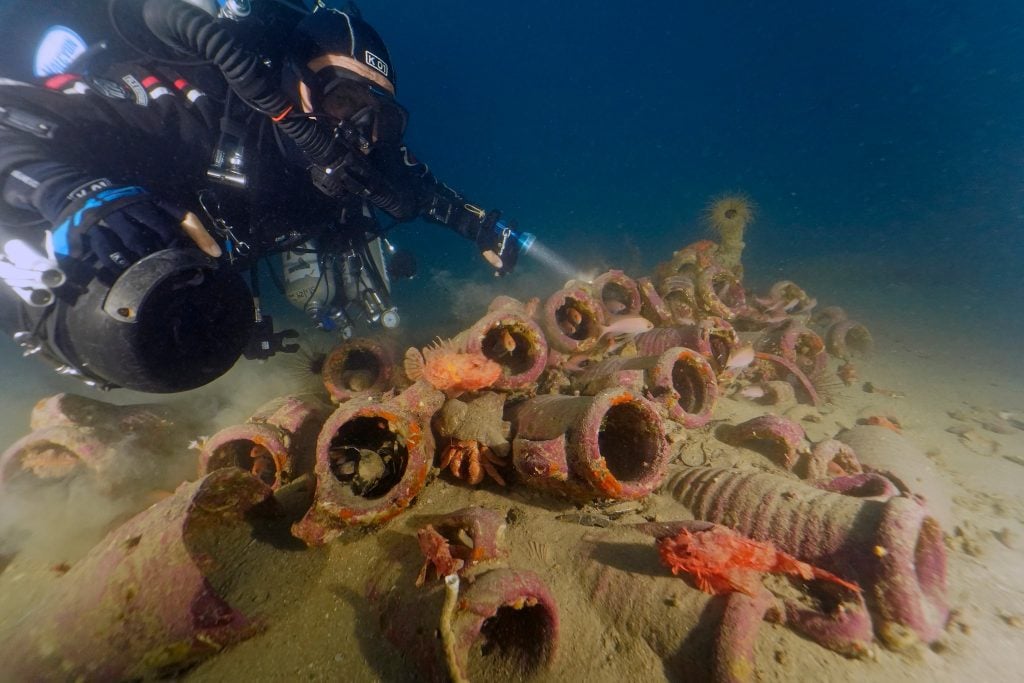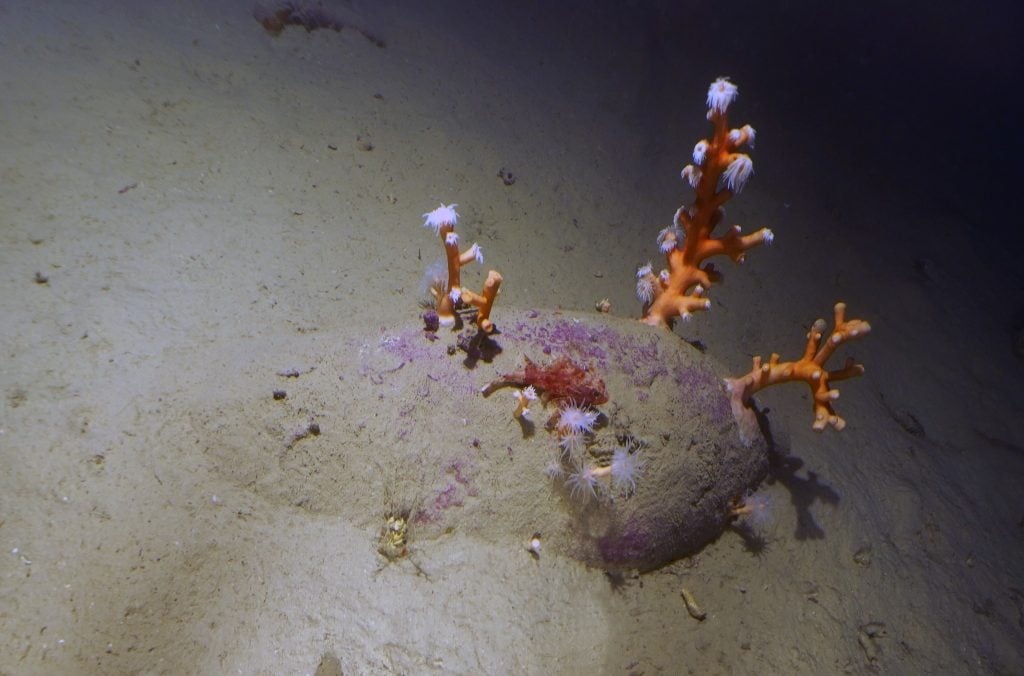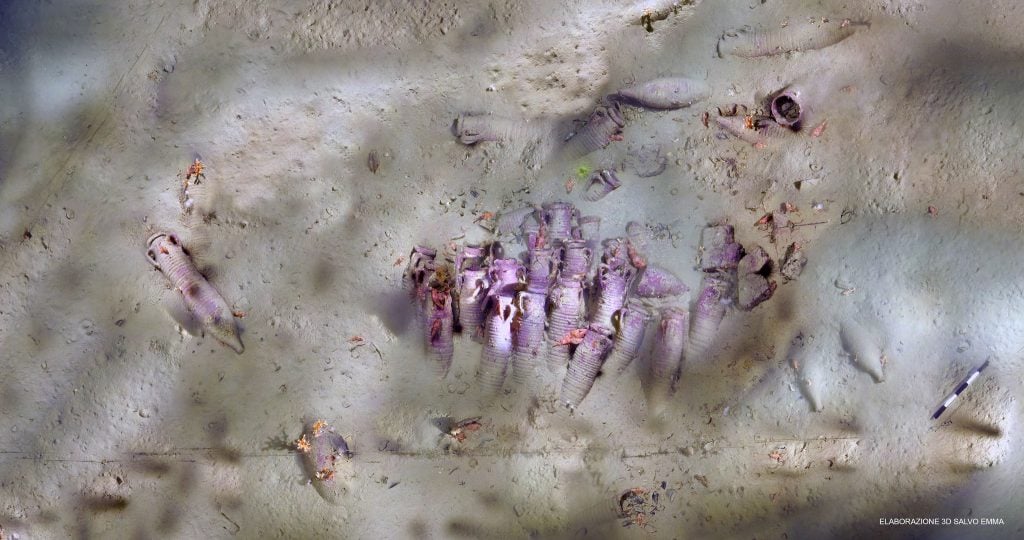Archaeology & History
Astonishing Trove of Rare Roman Pottery Uncovered Beneath Sicilian Waters
The vessels could help elucidate ancient trade routes.

A shipwreck carrying rare Roman pottery has surfaced three miles off the coast of Syracuse, Sicily—among the Vendicari Wildlife Oasis Orientata Nature Reserve. Two fishermen initially noticed strange objects poking up from the seafloor around this area back in January 2022. They promptly reported their discovery to Italian authorities. Now, the Superintendence of the Sea of Sicily has partnered with the Capo Murro Diving Center, directed by Fabio Portella, to take a closer look.
Nearly 230 feet beneath the water’s surface, divers came upon and documented in three-dimensional photogrammetric relief 40 ceramic vessels. Some have since become part of the marine ecosystem, scattered about and half-buried, but most are still lined up in their original, neat cargo rows. The ship which once carried them is buried in the sand beneath, authorities said.

Marine life has taken over some of the amphorae. Image: the Superintendence of the Sea of Sicily Facebook.
These jugs’ distinctive shape and features match the traits of Richborough 527 jars, a type of horizontally ribbed amphora. Although these vessels are named for the town in Kent County, England, where they were first classified, they have popped up throughout the former Roman Empire—predominantly in Southern Britain, though fragments have also appeared in Spain, Croatia, and beyond.
Richborough 527 jars are believed to have originated, however, in Lipari, Italy, one of the Aeolian Islands, situated 25 miles off of Sicily’s northern coast. If it turns out that these vessels are the same variety manufactured and found amongst Lipari, that would render them roughly 1,900 to 2,100 years old.

The Richborough Jars. Image: the Superintendence of the Sea of Sicily Facebook.
Similar amphora turned up in Lipari alongside evidence of alum during the 1990s, “during excavations in the Portinenti Valley,” Italian authorities noted. Richborough 527 jars were often used to transport alum, a compound of double-hydrated aluminum and potassium sulfate. The chemical was a known specialist product frequently traded around the Roman Empire. Alum served multiple purposes, but was most often used to affix dye to fabric. What’s more, it ranks amongst the major volcanic products of Lipari, as documented by the likes of famed ancient Greek historian Diodoro Siculo.
Based on their announcement, it doesn’t seem like the Superintendence has any intention of bringing these amphorae ashore—or digging up the rest of the ship itself. Instead, it’s more interested in verifying whether the newly discovered amphorae are actually Richborough 527 jars. If so, finding them over here, off of Sicily’s southern shores, would help historians understand more about ancient Mediterranean trade routes, in a manner that only such lucky underwater finds make possible.





